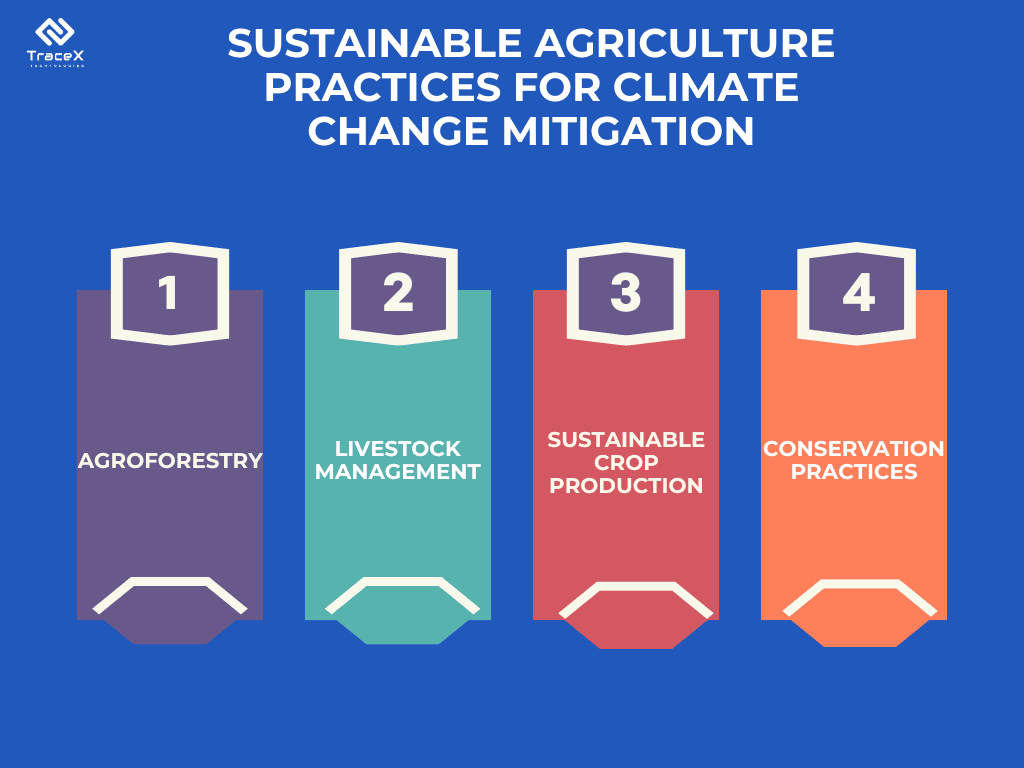Contact: +91 99725 24322 |
Menu
Menu
Quick summary: Climate change is a pressing challenge facing humanity. This blog post provides an overview of the latest strategies for climate change mitigation and adaptation. Learn about the urgent need for action, the impacts of climate change, and the role of companies and governments in reducing greenhouse gas emissions and building resilience.

Every year, we witness more intense storms, devastating wildfires, and rising sea levels, reminding us that climate change is no longer a distant threat—it’s here and now. The urgency to slow down and even reverse these effects is undeniable, yet the road to meaningful climate change mitigation is fraught with challenges. From navigating complex policies to overcoming economic hurdles, the pain point is clear: knowing that we need to act and figuring out how to do it effectively are two very different things.
These twin pillars of climate action are essential for safeguarding the planet’s future and ensuring the well-being of present and future generations. From renewable energy adoption to ecosystem restoration and community resilience-building, the pursuit of climate change mitigation and adaptation demands comprehensive and collaborative approaches across sectors and nations.
According to Copernicus, 2023 was the hottest year on record, with global temperatures close to 1.5˚C
Climate change is one of the most pressing challenges facing humanity today. It is causing unprecedented disruptions to our planet’s ecosystems, weather patterns and natural resources. The need for immediate action to mitigate and adapt to climate change is more urgent than ever before. Climate change mitigation and adaptation have become critical priorities for governments, organizations, and individuals around the world.
Mitigation involves efforts to reduce greenhouse gas emissions to slow down or prevent further global warming. This can be achieved by transitioning to cleaner sources of energy, such as wind and solar power, improving energy efficiency, and implementing policies to encourage sustainable practices.
Climate change has significant impacts on agriculture and food production, and addressing these impacts is crucial for ensuring the sustainability of the agriculture sector.
The urgency of addressing climate change mitigation and adaptation has become increasingly clear in recent years, as the impacts of global warming continue to intensify. Extreme weather events, such as hurricanes, floods, and droughts, are becoming more frequent and severe, and the resulting economic and human costs are significant.
The Earth’s atmosphere is made up of several gases, including nitrogen, oxygen, and small amounts of other gases. However, there are certain gases that have the ability to trap heat in the Earth’s atmosphere, known as greenhouse gases. These gases contribute to the greenhouse effect, which is the process by which heat is retained in the Earth’s atmosphere, causing the planet’s temperature to rise.
Greenhouse gases are gases that are naturally present in the Earth’s atmosphere, such as water vapor, carbon dioxide, methane, nitrous oxide, and fluorinated gases. These gases have the ability to trap heat from the sun and keep it in the Earth’s atmosphere. The greenhouse effect is essential for life on Earth, as it helps to maintain the planet’s temperature within a habitable range. However, human activities have caused an increase in the concentration of greenhouse gases in the atmosphere, leading to an enhanced greenhouse effect and global warming.
Carbon dioxide is the most well-known greenhouse gas, and it is primarily released through the burning of fossil fuels. Fossil fuels such as coal, oil, and natural gas are burned to provide energy for transportation, heating, and electricity generation. Deforestation is also a significant contributor to carbon dioxide emissions, as trees absorb carbon dioxide during photosynthesis. When forests are cleared, this carbon dioxide is released into the atmosphere. Methane is another greenhouse gas that is released through human activities, particularly through livestock farming and the production of fossil fuels. Nitrous oxide is released through the use of nitrogen-based fertilizers in agriculture, while fluorinated gases are released through industrial processes.
The sources of greenhouse gas emissions are mainly attributed to human activities. The burning of fossil fuels for energy production, transportation, and industrial processes is responsible for the majority of carbon dioxide emissions. Livestock farming, particularly the production of beef and dairy products, is responsible for significant methane emissions. The use of nitrogen-based fertilizers in agriculture is a significant source of nitrous oxide emissions. Industrial processes, including the production of cement and steel, also contribute to greenhouse gas emissions.
The consequences of greenhouse gas emissions are severe. As the concentration of greenhouse gases in the atmosphere increases, the Earth’s temperature also rises. This causes a variety of negative impacts, including more frequent and severe weather events such as heat waves, droughts, and floods. It can also lead to rising sea levels, which can threaten coastal communities and ecosystems. Additionally, it can have a negative impact on agriculture and food production, as changing weather patterns can disrupt crop growth and cause food shortages.
Climate resilience in agriculture is becoming increasingly vital as farmers around the world face unpredictable weather patterns, prolonged droughts, and extreme storms. These challenges threaten not just crop yields, but also the livelihoods of millions of people dependent on agriculture. Building climate resilience means adopting practices and technologies that allow agricultural systems to withstand, recover from, and even thrive amid these environmental stresses. This includes everything from diversifying crops and implementing sustainable farming techniques to utilizing advanced data analytics for better decision-making. By strengthening the resilience of agricultural practices, we can ensure food security and protect rural communities from the devastating impacts of climate change.
Agriculture is both a contributor to and a victim of climate change. Agriculture is responsible for a significant amount of greenhouse gas emissions which are a primary cause of climate change.

Agriculture and agriculture-driven land use change contribute around 17% of global emissions, while 75% of agricultural producers targeted by CDP do not report their emissions.
At the same time, agriculture is also highly vulnerable to the impacts of climate change, such as extreme weather events, drought, and pest and disease outbreaks. However, agriculture can also play a critical role in climate change mitigation. But it also has the potential to be a key part of the solution. By adopting sustainable agricultural practices farmers and policymakers can mitigate greenhouse gas emissions and build more resilient food systems that can withstand the impacts of climate change.
Climate-smart agriculture (CSA) is an approach that reimagines farming in the face of climate change, integrating sustainable practices to boost productivity while reducing greenhouse gas emissions and enhancing resilience to climate impacts. It involves the adoption of innovative techniques such as precision farming, agroforestry, and the use of drought-resistant crop varieties, all aimed at optimizing the use of natural resources. CSA not only supports farmers in adapting to the changing climate but also plays a crucial role in mitigating climate change by sequestering carbon and improving soil health. By embracing climate-smart practices, agriculture can become a powerful force in the global effort to ensure food security and combat climate change, creating a sustainable future for both farmers and the environment.
Sustainable land management can help to improve the resilience of agricultural systems to the impacts of climate change, such as drought, flooding, and pests and diseases. For example, the adoption of regenerative agriculture can help to improve soil health, which can in turn improve crop yields and reduce vulnerability to drought.
Healthy soils have the capacity to sequester carbon from the atmosphere, reducing greenhouse gas emissions. Practices like cover cropping, conservation tillage, and crop rotation can improve soil health and help to sequester carbon.
Agriculture has both the potential to contribute to and benefit from climate change mitigation efforts. By adopting sustainable practices and promoting climate-smart agriculture, we can reduce greenhouse gas emissions from agriculture and help to build more resilient agricultural systems that can withstand the impacts of climate change.
Technology plays a crucial role in tracking sustainable and carbon practices by providing advanced tools for data collection, analysis, and management.
Real-time Monitoring: Technology enables real-time monitoring of carbon emissions, land use changes, and sustainable practices, allowing for immediate intervention when deviations occur.
Data Analytics: Advanced data analytics tools process large volumes of data collected from sensors, satellites, and other sources to identify trends, patterns, and areas for improvement in sustainable practices.
Remote Sensing: Satellite imagery and remote sensing technologies provide detailed insights into land cover changes, forest health, and carbon sequestration rates, facilitating accurate tracking of environmental impacts.
Blockchain Technology: Blockchain enables transparent and immutable record-keeping of sustainable practices and carbon credits, ensuring the integrity and authenticity of data throughout the supply chain.
IoT Devices: Internet of Things (IoT) devices such as smart sensors and drones can be deployed to monitor soil health, water usage, and biodiversity, helping farmers and land managers make informed decisions to enhance sustainability.
Mobile Applications: Mobile apps allow stakeholders to report sustainability metrics, access training materials, and communicate with experts, fostering collaboration and knowledge sharing across the agricultural value chain.
Digital Platforms: Integrated digital platforms provide a centralized hub for managing sustainability initiatives, carbon offset projects, and compliance requirements, streamlining administrative tasks and facilitating data-driven decision-making.
TraceX’s Digital Monitoring, Reporting, and Verification (DMRV) platform revolutionize the tracking and verification of sustainable and carbon practices. By leveraging cutting-edge technology such as blockchain, IoT devices, and remote sensing, TraceX enables real-time monitoring of carbon emissions, land use changes, and sustainability initiatives. This ensures transparency, accuracy, and integrity in data collection and reporting, enhancing trust and accountability throughout the supply chain. Moreover, TraceX’s DMRV solutions streamline verification processes, reducing time and costs associated with compliance audits and certification. Ultimately, TraceX empowers organizations to track, verify, and improve their sustainable and carbon practices with precision and efficiency, paving the way for a more sustainable future.
EXPLORE OUR DMRV PLATFORM
The integration of both mitigation and adaptation strategies becomes not just an option, but a necessity with the growing challenges of climate change. By reducing greenhouse gas emissions through sustainable practices and simultaneously building resilience to climate impacts, we can safeguard ecosystems, protect communities, and ensure the stability of global food systems. The path forward demands collaboration across sectors, innovation in climate-smart technologies, and a commitment to long-term sustainability. Together, mitigation and adaptation offer a comprehensive approach to addressing the climate crisis—one that holds the promise of a more resilient and equitable future for all.
Mitigation: Reducing greenhouse gas emissions to prevent the worst impacts of climate change.
Adaptation: Preparing for and responding to the inevitable effects of climate change.
Mitigation: Reduce your carbon footprint by using renewable energy, conserving energy, and reducing consumption.
Adaptation: Support local initiatives for climate resilience, prepare for emergencies, and advocate for sustainable policies.
Challenges: Technological limitations, economic costs, and social resistance.
Opportunities: Innovation, job creation, and improved quality of life.
